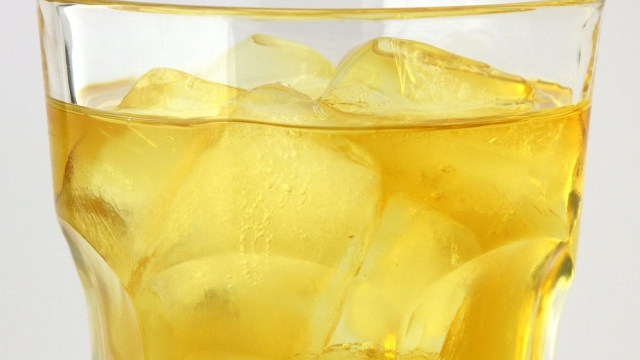Whisky, with its rich history and complex character, has captivated countless enthusiasts around the globe. This iconic spirit, renowned for its time-honored distillation process, offers a refined drinking experience that embodies the essence of sophistication. From the moment the liquid amber elixir touches the lips, whisky reveals a world of flavors and aromas that tell a story of craftsmanship and tradition. Whether enjoyed neat, on the rocks, or mixed into a delectable cocktail, whisky has a versatility and depth that has made it an enduring symbol of elegance and refinement.
Steeped in tradition, whisky production encapsulates a meticulous art form that requires passion and patience. From the carefully selected malted barley to the charred oak barrels used for maturation, every element contributes to the unique and distinctive flavor profiles found in different whisky varieties. Whether it hails from Scotland, Ireland, the United States, or any other whisky-producing region, each bottle possesses its own individuality, telling a tale rooted in the terroir of its origin.
As we embark on this journey into the enchanting world of whisky, we will explore the different types and styles that exist, delving into the nuances that distinguish them from one another. With each sip, we will unravel the complexities of whisky’s flavor profiles, embracing the smoky notes of peat, the honeyed sweetness of bourbon, and the subtle fruitiness of Scotch. Join us as we uncover the timeless allure of this spirit, and allow us to guide you through a captivating exploration of the world of whisky.
Types of Whisky
Whisky, a popular spirit enjoyed by many, comes in various types that showcase its richness and complexity. From smooth and mellow flavors to bold and smoky profiles, whisky offers a wide range of options to suit every palate.
Single Malt Whisky:
Crafted from malted barley and distilled at a single distillery, single malt whisky is known for its distinct flavors. Each distillery puts its unique stamp on the spirit, resulting in a diverse array of tastes and aromas. From fruity and floral notes to hints of spices and oak, single malt whisky offers an exquisite experience for whisky connoisseurs.Blended Whisky:
Blended whisky is created by combining different types of whiskies, such as malt and grain whiskies, to achieve a harmonious balance of flavors. Master blenders meticulously select and marry various whiskies to create a smooth and consistent taste. Blended whisky often offers a versatile and approachable choice for both new and seasoned whisky enthusiasts.Bourbon Whisky:
Hibiki 30th Anniversary
A distinctly American creation, bourbon whisky is mainly produced in the United States. It follows specific regulations, including the requirement of using at least 51% corn in its mash bill. This type of whisky is aged in new charred oak barrels, which imparts unique flavors of vanilla, caramel, and sometimes a touch of smokiness. Bourbon whisky is celebrated for its rich and robust character, making it a favorite among whisky lovers worldwide.
The world of whisky is vast and diverse, with each type offering its own set of flavors and characteristics. Whether you prefer the elegance of single malt, the artistry of blended whisky, or the boldness of bourbon, there is a whisky out there waiting to be discovered and savored.
The Distillation Process
Whisky, a beloved beverage enjoyed by many around the world, undergoes a fascinating distillation process that brings forth its unique flavors and aromas. This intricate process is responsible for transforming simple ingredients into the complex and sophisticated spirit we know and love.
The journey begins with the mashing of malted barley, a key ingredient in whisky production. Barley grains are soaked in hot water, allowing enzymes to convert starches into fermentable sugars. This sweet liquid, known as the mash, is then transferred to large vessels where yeast is added to initiate fermentation.
During fermentation, the yeast consumes the sugars in the mash, converting them into alcohol. This process typically takes a few days, resulting in a liquid known as the wash. Although the wash already contains alcohol, it is still far from being whisky. The next step, distillation, is what truly transforms the wash into a refined spirit.
In the distillation process, the wash is heated in copper pot stills or column stills, depending on the desired style of whisky. As the liquid heats up, alcohol vaporizes and rises through tall copper necks. The vapor then condenses in the cooler tubes and returns to its liquid form, known as distillate. This distillate contains the essence of the wash, with higher alcohol content and concentrated flavors.
By repeating the distillation process, distillers are able to remove impurities and "cut" the spirit to achieve their desired flavor profile. The spirit is separated into three parts: the "heads" which contain harsh and undesirable compounds, the "hearts" which are the desired whisky spirit, and the "tails" which hold heavier compounds and flavors. Only the hearts are kept, while the heads and tails are discarded or recycled.
The distillation process is not just a means to an end, but a critical step in whisky production that allows for the development of unique characteristics and complexities. From the careful selection of ingredients to the precise cuts made during distillation, every element contributes to the exquisite spirit that embodies the true essence of sophistication.

Appreciating Whisky Tasting
Whisky tasting is an art that requires utmost attention to detail and a heightened sense of appreciation. Whether you are a seasoned whisky connoisseur or a curious beginner, delving into the world of whisky opens up a world of complexity and sophistication.
When it comes to appreciating whisky, one of the first things to consider is the visual aspect. Taking a moment to admire the color of the whisky in your glass can provide valuable insights into its character. Whiskies can range from pale gold to rich amber, with variations indicating differences in age, cask type, and distillery techniques.
Next, pay attention to the aromas that emanate from your glass. Gently swirling the whisky will release its hidden scents, allowing you to uncover a myriad of delightful notes. From the sweet fragrance of caramel and vanilla to the smoky undertones of peat or the fruity essence of orchard fruits, each whisky has a unique olfactory profile waiting to be discovered.
Finally, the true test lies in the taste. Sip the whisky slowly, allowing its flavors to coat your palate and unfold with each subsequent sip. Notice the interplay between sweetness, bitterness, and acidity, as well as the texture and viscosity of the liquid. A well-balanced whisky will showcase a harmonious combination of flavors, leaving a lasting impression on your taste buds.
In conclusion, appreciating whisky tasting is a sensory experience that engages all of our senses. By taking the time to observe, sniff, and savor, we can unlock the intricate nuances and complexities that make each whisky a truly unique and captivating spirit. So, raise your glass and embark on a journey of exploration through the captivating world of whisky.






Recent Comments